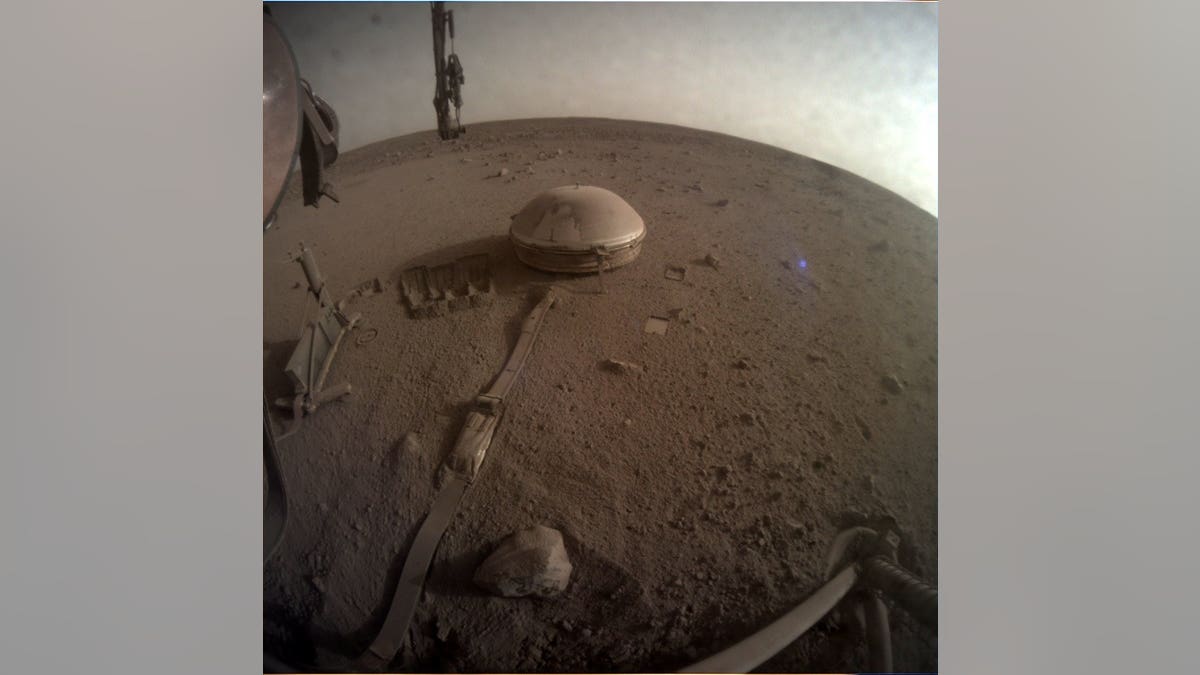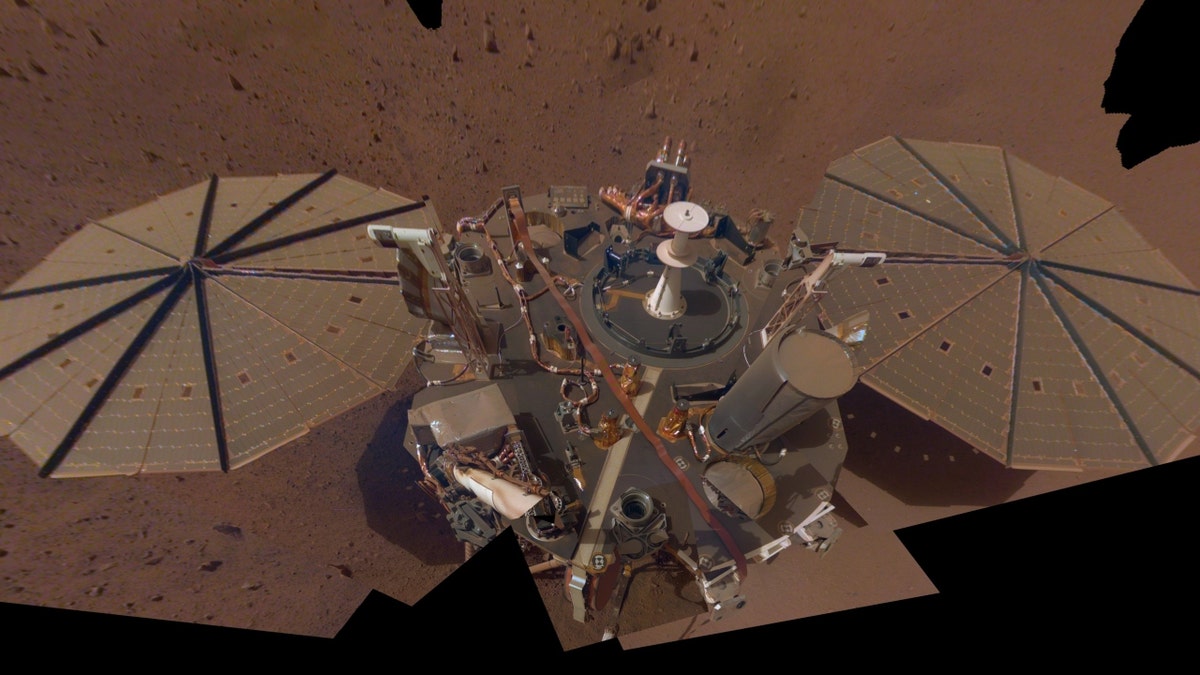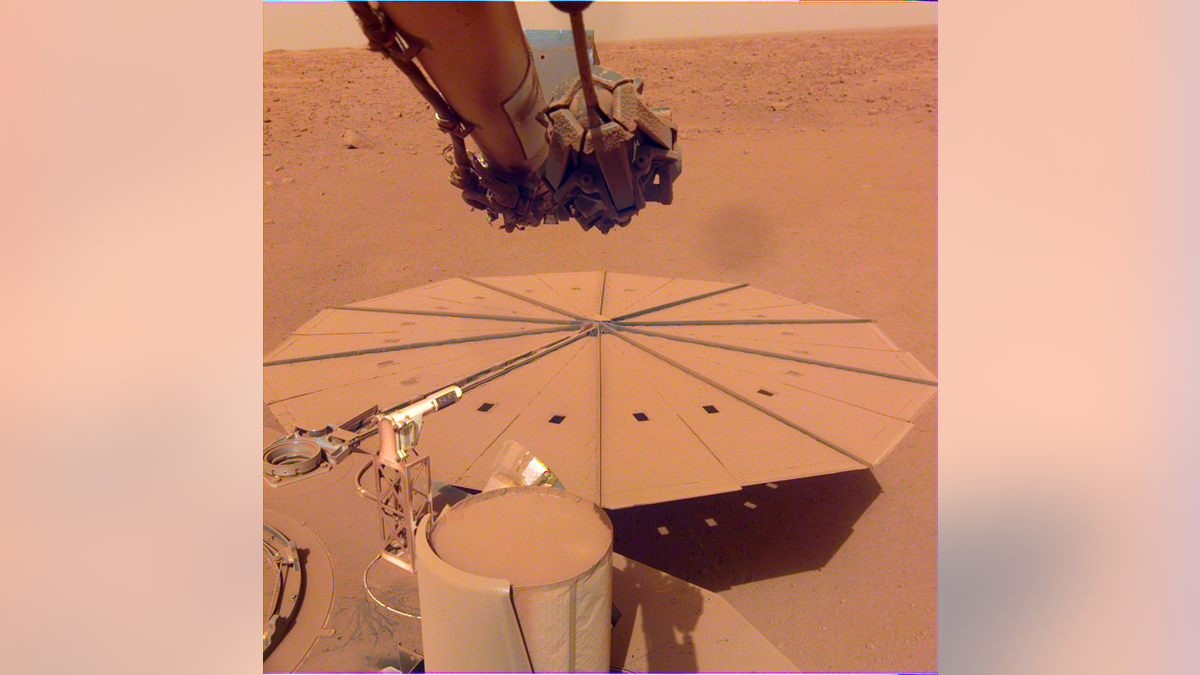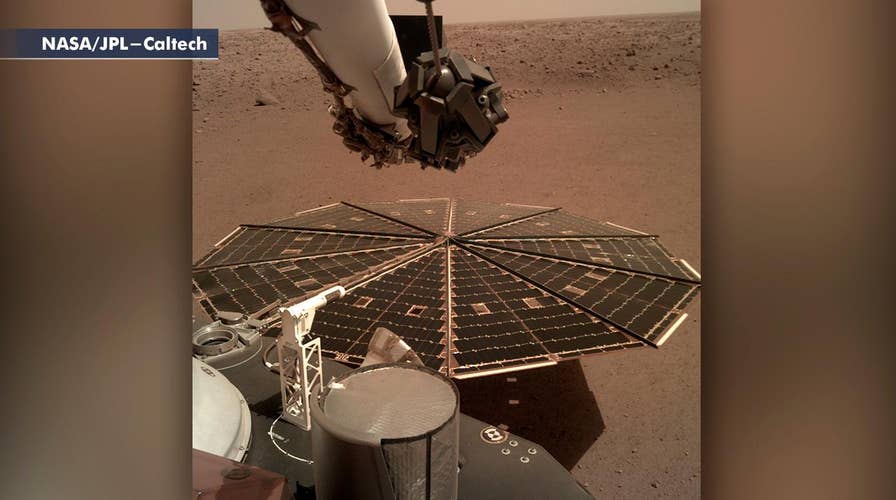Dramatic sights and sounds from NASA InSight lander on Mars
NASA releases stunningly clear images from its latest Mars probe; insight from the Smithsonian Institute's John Grant.
NASA’s InSight Mars lander, which touched down on the Red Planet over four years ago, transmitted what may be its final image on Monday.
"My power’s really low, so this may be the last image I can send. Don’t worry about me though: my time here has been both productive and serene. If I can keep talking to my mission team, I will – but I’ll be signing off here soon," Insight's 25-30 person team posted to the lander's Twitter on Monday afternoon. "Thanks for staying with me."

The potential final image NASA’s InSight Mars lander, which is expected to run out of power later this month. (NASA's InSight Mars lander)
NASA will officially end the mission when the lander misses two communication attempts in a row with a spacecraft orbiting the planet.
NASA MARS ROVER DISCOVERS WEIRD STRING-LIKE OBJECT THAT GOES VIRAL
InSight's operations team started preparing for the lander's end earlier this year, shutting down devices that require the most power and ensuring that data it has collected over the past four years is preserved.

Selfie taken by the Insight lander's Instrument Deployment Camera on the lander’s robotic arm on April 11, 2019. (Credits: NASA/JPL-Caltech)
NASA RELEASES JAMES WEBB SPACE TELESCOPE IMAGE OF PHANTOM GALAXY
Since it landed in November 2018, the lander has provided insight on Mars' liquid core and the composition of its other interior layers. It has detected more than 1,300 quakes on the planet, including a magnitude 5 in May.
"Finally, we can see Mars as a planet with layers, with different thicknesses, compositions," Bruce Banerdt of NASA’s Jet Propulsion Laboratory in Southern California said in a statement last month. "We’re starting to really tease out the details. Now it’s not just this enigma; it’s actually a living, breathing planet."

Thick layer of dust on one of the lander's solar panels. (NASA/JPL-Caltech)
CLICK HERE TO GET THE FOX NEWS APP
The lander's core mission was accomplished in its first two years. A pair of 7-foot wide solar panels initially produced about 5,000 watt-hours each sol, or Martian day, but were only producing about 500 watt-hours per sol last month as dust has accumulated.



